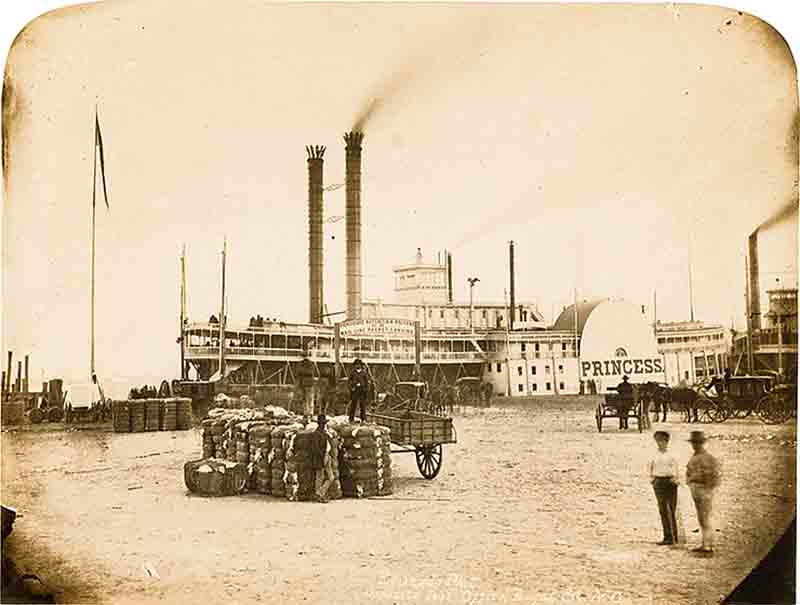In the daily grind of workboat operations, where the commercial use of the rivers is often taken for granted, it’s hard to imagine what life was like 150 years ago when America’s rivers were just being discovered and documented for their beauty and navigational potential.
A newly opened exhibition at the National Gallery of Art in Washington, D.C. offers unique insight through rarely seen black and white photographs that showcase the natural resources and industrial development in the mid-1800s.

Pamela Glass photo.
“East of the Mississippi: Nineteenth-Century American Landscape Photography” focuses on photographers who used newly arrived techniques in America such as daguerreotypes, salted paper prints, stereo cards and albums to document untouched wilderness, devastation from the Civil War and the early days of industry and tourism.
“There was so much attention to photography west of the Mississippi,” Diane Waggoner, who curated the exhibition, said in an interview and walk-through of the exhibition. “But other than the Civil War, no one had done an evolution of photography on the eastern side of the country. The theme is the tension of nature and the transformation of the country through development of waterways, steamships, railroads and the coal and oil industries.”
For lovers of vintage photographs that offer a window on another era and lifestyle, this is a treasure trove, and there’s no comparison to the digital snaps that we take today with our smartphones. Under that old world patina of vintage photography, there’s Niagara Falls in all its misty, splashy splendor; the hustle and bustle of St. Louis as it transforms from farming to an industrialized economy; the busy docks of New Orleans as the mighty Mississippi becomes a central artery for commerce.
By the late 1800s, photographers had become important players in the dramatic reshaping of the American landscape. Their pictures of railroads were widely exhibited in hotel lobbies and railroad stations and used for promotional purposes in newspaper ads, postcards and maps.
In the 1880s, photographer Henry Peter Bosse accompanied a mapmaking survey for the U.S. Army Corps of Engineers to assess plans for improving navigation on the Upper Mississippi River. His photographs recorded the transformation of the landscape through dams, dredging and shoreline protections, including a shot of the Old Railway Pontoon Bridge at Prairie du Chien, Wis, in 1885, and another of construction of the Rock and Brush Dam at low water in 1891. Although Bosse’s goal was documentary, the deep, rich blue of his photographs — result of the chemical process used to create them — suggests that he approached his assignment with an artist’s eye, according to the exhibition catalogue.
Meanwhile, panoramic prints of sites along the Mississippi by photographer William Henry Jackson rivaled paintings in size and captured the dramatic shift to industrialization, and Thomas Easterly focused on river commerce with images of docks and boats along the Mississippi and Missouri Rivers, including a rare shot of the St. Louis Levee in 1852.
If you’re planning on being in D.C., make sure you visit the exhibition in the National Gallery main building through July 16.
Many of the images can also be viewed on the museum’s website.





